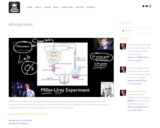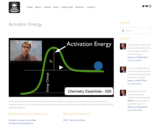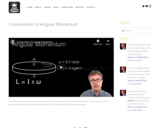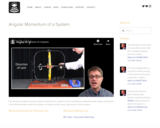
Paul Andersen reflects on the 2013 AP Biology Exam.
- Subject:
- Agriculture & Natural Science
- Biology
- Material Type:
- Lesson
- Provider:
- Bozeman Science
- Date Added:
- 05/29/2014

Paul Andersen reflects on the 2013 AP Biology Exam.

Paul Andersen details the first 7 of 13 labs in the AP Biology Curriculum. The following topics are all covered: Artificial Selection, Hardy-Weinberg Equilibrium, Comparing DNA using BLAST, Diffusion and Osmosis, Photosynthesis, Respiration, Mitosis and Meiosis.

Paul Andersen explains the final 6 of 13 AP Biology Labs. The following topics are included: Transformation, Restriction Analysis of DNA, Energy Dynamics, Transpiration, Animal Behavior, and Enzyme Activity.

Set of flash cards used for AP Biology.

Mr. Andersen describes the two portions of the AP Biology Test. Tips for answering multiple choice and free response questions are included. Sample questions from old AP tests are also included.

Paul Andersen explains the structure, function and importance of adenosine triphosphate (ATP). He begins by describing the specific structure of the molecule and its three main parts: adenine, ribose sugar, and phosphate groups. He explains how energy can be stored in ATP and released through hydrolysis to ADP and Pi.

Abiogenesis Paul Andersen describes how life could have formed on our planet through natural processes. The progression from monomers, to polymers, to protocells and finally to cells is described. The Miller-Urey experiment is described in detail as well as characteristics of the latest universal ancestor

Paul Andersen explains how acid-base chemistry can be understood in terms of equilibrium. Water is present in all acid-base chemistry and is amphoteric in nature. The Ka and Kb values can be used to determine the strength of an acid or a base. Titrations can be used to student neutralization reactions between strong and weak acids and bases.

Paul Andersen explains pH as the power of hydrogen. He explains how increases in the hydronium ion (or hydrogen ion) concentration can lower the pH and create acids. He also explains how the reverse is true. An analysis of a strong acid and strong base is also included.

In this video Paul Andersen explains how the activation energy is a measure of the amount of energy required for a chemical reaction to occur. Due to the collision theory the activation energy requires proper energy and orientation of the colliding molecules.

Paul Andersen explains important concepts that can not be explained by simple Mendelian genetics. He begins with a discussion of polygenic inheritance and uses a simulation on height to show how a bell shape curve of phenotypes is produced.

Paul Andersen describes the pros and cons of industrial agriculture including: monocropping, irrigation, and the use of pesticides, fertilizers, and GMOs.

Paul Andersen explains the process of anaerobic respiration. This process involves glycolysis and fermentation and allows organisms to survive without oxygen. Lactic acid fermentation is used in animals and bacteria and uses lactate as an electron acceptor. Alcoholic fermentation used ethyl alcohol as an electron acceptor.

In this video Paul Andersen explains how scientists analyze data and evaluate evidence. He starts with a description of data and how it must be properly displayed. He then describes types of data in each of the four big ideas. He finally discusses a number of practice questions related to data analysis.

Paul Andersen introduces Anatomy and Physiology in this podcast. He starts by describing how the form of an object fits the function. He then explains the themes of homeostasis and hierarchy. He describes the four major types of tissues; epithelial, muscle, nervous and connective.

Paul Andersen explains how the change in angular momentum is equal to the torque applied over a given time. A sample problem and inquiry activity are included.

Paul Andersen explains rotating object have angular momentum. The angular momentum of a point object is the product of the distant from the center of rotation and the linear momentum. The angular momentum of an extended object is a product of the rotational inertia and the angular velocity.

Paul Andersen explains that the angular momentum of a system will be conserved as long as there is no net external torque. Both point objects and extended objects are covered along with several examples.

Paul Andersen explains how the angular momentum of a system can be calculated by determining the angular momentum of all individual objects within the system. An inquiry activity using a gyroscope is also included.

Paul Andersen steps you through eight types of animal behavior. He starts by defining ethology and explaining that behavior varies from innate to learned. He discusses each of the following with examples; instinct, fixed action pattern, imprinting, associative learning, trial and error learning, habituation, observational learning and insight.